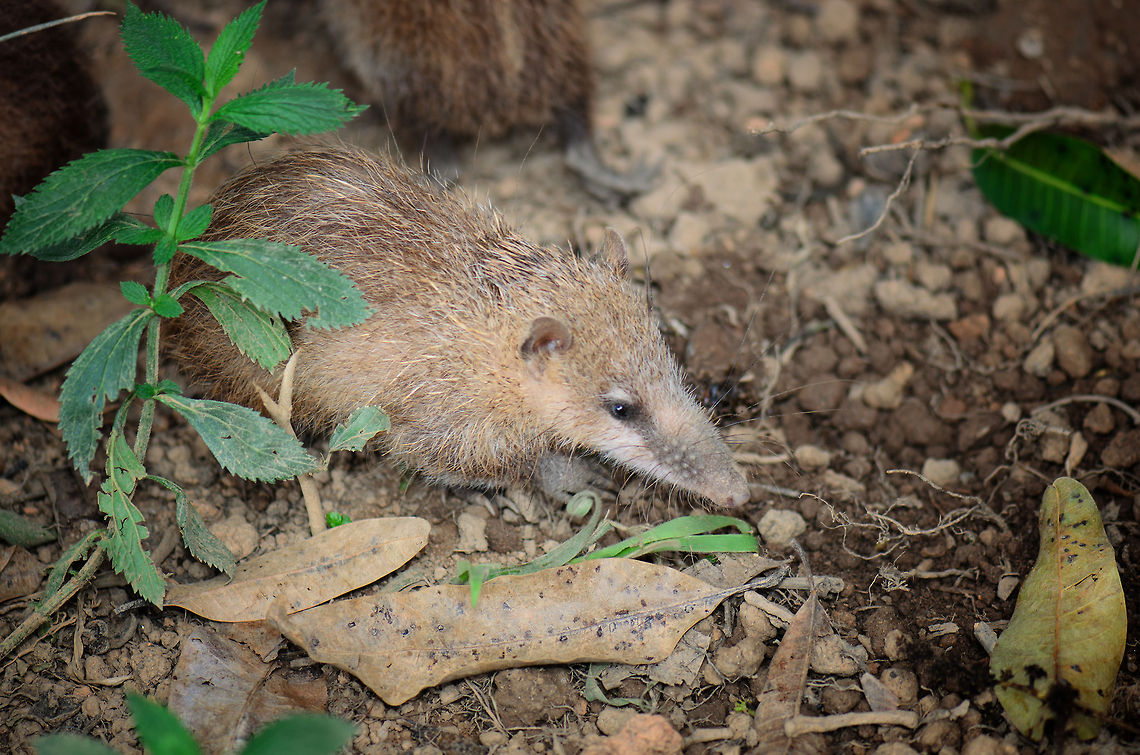The tailless tenrec (Tenrec ecaudatus), also known as the common tenrec, is a species of mammal in the family Tenrecidae. It is the only member of the genus Tenrec. Native to Madagascar, it is also found in the Comoros, Mauritius, Réunion, and Seychelles, where it has been introduced. Its natural habitats are subtropical or tropical dry forests, subtropical or tropical moist lowland forests, subtropical or tropical moist montane forests, dry savanna, moist savanna, subtropical or tropical dry shrubland, subtropical or tropical moist shrubland, subtropical or tropical high-altitude shrubland, subtropical or tropical dry lowland grassland, subtropical or tropical high-altitude grassland, arable land, pastureland, plantations, rural gardens, and urban areas.
The tailless tenrec is the largest land-dwelling species of the tenrec family, Tenrecidae. It is 26 to 39 cm (10 to 15½ in) in length and weighs 1.5 to 2.5 kg (3¼ to 5½ lb). It has medium-sized, coarse grey to reddish-grey fur and long, sharp spines along its body. It not only eats small invertebrates among leaves, but also scavenges and hunts frogs and mice. If threatened, this tenrec will scream, erect its spiny hairs to a crest, jump, buck and bite. It shelters in a nest of grass and leaves under a rock, log or bush by day. It gives birth to a litter of as many as 32 young, with an average litter between 15-20 after a gestation of 50–60 days; when young, they have a black-and-white striped appearance. Despite being sometimes known as the tailless tenrec, they have a small tail 1 to 1.5 cm (⅜ to ½ in) in length.
The tenrec is the first known tropical mammal found to hibernate for long stretches without arousal periods. Because it can hibernate for up to nine months at a time these early mammals may have survived the cataclysm that killed off dinosaurs. [Credit: Wikipedia]


